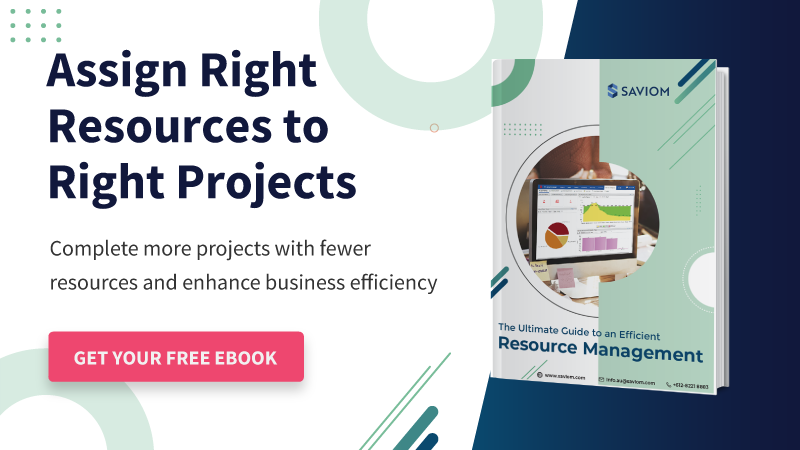Organizations are fostering an employee-centric culture. Employee satisfaction, engagement, and well-being are given the foremost priority. This is because the extent to which the workforce is engaged at the workplace directly impacts their productivity and end-results.
To support this statement, Gallup’s survey reveals that engaged employees produce better business outcomes across industries, company sizes, and nationalities, and in good economic times and bad.
An employee-centric culture entails efficient resource management, integration of professional development plans for employees, a positive work atmosphere, wellness initiatives, sufficient paid-time-off (PTO) policies, and so on. If your organization fails to cater to any of these, it brings down your workforce’s morale, and they will feel less-driven to show up to work, eventually causing prolonged and unplanned absenteeism.
Employee absenteeism has a catastrophic effect on the team’s progress, project performance, and top line. Thus, it is imperative to address this concern and implement necessary measures to curb absenteeism in the workplace.
This article explains in-depth the causes of absenteeism and some proven techniques to combat it.
Let’s begin with understanding,
What are the causes of absenteeism?
Employee absenteeism arises when your workforce takes prolonged, uninformed absences for no definite reasons. It can be either due to personal factors like illness, family emergencies, and others or can take an off because of professional concerns.
Whereas personal reasons can be dealt with, it’s the manager’s responsibility to work on the professional ones.
Some of the professional reasons resulting in unplanned leaves include:
Over-utilization
Inefficiency in managing resources and their schedules can often result in the overallocation of workload. Moreover, managers may end up setting unrealistic deadlines causing distress amongst the employees. Subject to these scenarios, employees will eventually experience burnout and start calling in sick.
In fact, a Deloitte survey states that around 50% of employees take personal time-off when they are burned out.
Read More: How to Measure Different Types of Resource Utilization
Lack of professional growth opportunities
Every employee has career aspirations and some personal goals to thrive in their respective fields. When employers fail to provide enough opportunities to the resources that will help them scale up, they will feel less inspired at the workplace. In addition, lack of training and development programs also result in lowered motivation levels. All this cumulatively leads them to lose interest in work and take unannounced leaves.
Lower morale and disengagement
Often is the case when your workforce is not in the best of spirits to work. This can be due to a lack of appreciation at the workplace, disengagement because they are not committed to their work, or there is no sense of belonging, and so on. When employees don’t find enough reasons that drive them to work every day, they will start skipping their work without prior notice.
Workplace harassment
If your resources face harassment or bullying from their co-workers, they will try to avoid the situation by not showing up at work. This can be due to a lack of support from leaders or the absence of anti-harassment policies at the workplace.
Compensation not as per the market value
When your workforce is investing their time and efforts to help you attain your strategic goals, they expect their compensation to be fair and just. If, as an employer, you are paying them less than what they deserve or less than the actual market value, it will naturally demotivate them. Employees will show a lack of commitment towards your firm and goals & objectives and will find reasons to skip workdays.
Given the causes of workplace absenteeism, let us now understand its impact on organizational efficiency.
The effects of workplace absenteeism
Organizations have a plethora of projects on their radar that need to be accomplished within time and budget. If your critical resources who are working on a high-priority project take unplanned absences, it will restrict the project’s progress, and in worse cases, bring it to a standstill. Moreover, a team’s overall output and efficiency are declined due to a lack of effort and productivity from one of the members.
From the managerial perspective, absenteeism leads to last-minute hiring and increased overhead and resource costs. When a critical employee is on leave indefinitely and it’s restricting the project’s course, employers will indulge in last-minute hiring that will incur extra costs to the firm. In addition to that, it may also deteriorate the project’s quality because the new recruit will not be aware of the functionalities and client’s demands and cause unintentional errors.
In a nutshell, workplace absenteeism has a major influence on a company’s top and bottom line and substantially declines organizational efficiency.
Read More: How do project managers deal with unplanned leaves?
Given the repercussions, it’s time managers step-in and mitigate excessive absenteeism by implementing the right strategies. Here is what you can do to combat it,
Strategies to reduce absenteeism
Plan and allocate resources proactively
Proactive allocation of resources to project tasks gives them enough leeway to plan their schedules in advance. For example, if they are forewarned that they have a high-priority project in the near future to work on, they will plan their work and leave in advance. This is a win-win for both employers and employees. Neither the project’s progress and quality suffer nor are the resources caught off-guard at the eleventh hour.
Another important factor to consider while scheduling resources to project tasks in their areas of interest. If employees are working on tasks of their preference, it will keep them engaged and motivated, in turn giving their 100% to the job. Managers can equip a modern resource scheduling tool to plan the resource schedules in advance and get a unified view of their core competencies and roles.
Read More: Resource Allocation: A Guide on How to Apply it to Project Management
Ensure uniform work distribution
As mentioned earlier, over-utilization that results in burnout is one of the major contributors to absenteeism. To combat this, managers must ascertain that every resource is uniformly allocated and no one is overworked. When employees’ schedules align with their availability and standard hours, they will not experience workplace fatigue and distress.
An intuitive resource scheduling tool provides a birds-eye view of every resource, their present and future availability, and foresight into utilization and other metrics. Managers can leverage these features to their benefit and ensure that the workforce is optimally utilized across the organization.
Foster an inclusive team culture
When employees get a sense of belonging and feel connected to the team, they will know they are valued in the organization. If a team is working cohesively, every member is aware of the task interdependencies and how their work can impact the other’s assignments. Moreover, team collaboration allows active brainstorming where everyone’s opinions and perspective is given due importance.
Thus, bringing a team together and respecting every employee regardless of their role, race, etc. inspires them to work and contribute better. Managers can organize various team-building activities to coalesce their team and help them know each other beyond the work boundaries. A team worker will account for his/her responsibilities better as he/she will be aware of how unplanned absence can affect the entire team.
Read More: Project Resource Management: An Ultimate Guide on How to Master it
Convey your goals to give a sense of purpose
Imagine a situation where you are given an assignment to complete within a certain period without being informed about its purpose. Would you want to take it forward? Certainly not. The same goes for your workforce. They will not be driven to work and execute their tasks if they don’t know how it is adding value.
The onus is therefore on managers to convey the company’s short-term and long-term goals with utmost clarity. The set goals and milestones give an inspirational purpose to employees to stay productive at work. They will work with all their might to execute a quality product and meet the stakeholders’ expectations.
Providing a clear sense of purpose can become a source of inspiration for employees to deliver incredible work on a regular basis.
Read More: What is Workforce Planning, and How to Master it for Business Efficiency?
Organize rewards and recognition programs
A survey revealed that 69% of employees would stay on at the firm if there are better rewards and recognition programs. This is a clear indication that rewarding the workforce for their hard work is a direct key to boosting their morale and keeping them motivated.
Of course, anyone would want to get acknowledged when they are investing in time and efforts to help you attain your strategic goal. It gives them a reason to keep going and deliver better results next time. Thus, managers should work on organizing monthly or quarterly rewards and recognition programs. The employees who are rewarded will be more productive and the ones who aren’t will work better to get recognized the next time.
Provide sufficient paid time-off and formulate a policy
Every employee needs to plug-off from work to relieve the work stress and rejuvenate themselves. Thus, employers must provide sufficient paid-time-off to the resources to help them do so and stay more productive when they return. In addition to that, the firm should have a definite leave policy in place to set some clear guidelines regarding planned and unplanned leaves.
These practices will keep the employees aware of the repercussions they might face in case of prolonged absenteeism. And when they get sufficient paid-time-off, they don’t see the need of taking additional ones. To make it even better, employers can arrange for yearly team retreats to facilitate the team members to have some fun-time and strengthen the team-bond. All these practices will lift up the employees’ spirits and eliminate the need of taking uninformed absences.
Read More: How to Manage Resource Effectively with Precision
Conduct feedback session to drive individual growth
When you are embedding an employee-centric culture in your firm, you must keep in mind to take employees’ feedback into consideration. If they are unhappy with certain processes or practices, or if they feel their assignments are not aligning with their professional expertise, they can convey it without guilt. In fact, this feedback can help you gauge the reasons behind their absenteeism better.
Furthermore, encouraging feedback sessions makes the employees feel heard and valued in the firm. Decision-makers get a chance to improve the process and align the projects with the individual’s career plans and goals. Managers can also conduct necessary training programs to help their workforce hone their competencies and capabilities, and grow professionally.
Employees will stay committed to working for the long run when their development is given due diligence along with the firm’s mission and vision.
Read More: Top 7 Business Benefits of Training Scheduling Software
Conclusion- additional tips
A renowned business leader Douglas Conant has said ‘To win in the marketplace you must first win in the workplace.’
This adage holds true in every sense. Only when employers establish a positive work environment that empowers employees, can they maintain a competitive edge. The above-mentioned tips will help you build a strong culture that will enhance employee engagement and satisfaction, and substantially reduce employee absenteeism.
In addition to these tips, managers can also introduce flexible work or work-from-home policies, individual development plans, wellness programs, and an easy-to-work work environment as a part of their culture. All these amenities will keep the employee productivity at par and keep them committed to their work for the long haul.
What else do you think can help reduce absenteeism?
The Glossary
Read More: Glossary of Resource Workforce Planning, Scheduling and Management
SAVIOM Solution
SAVIOM is no doubt the market leader in offering the most powerful and configurable Enterprise Resource Management Solution. Having more than 20 years of experience, this Australian-based MNC has a global presence in over 50 countries. It is also popular with more than 100 customers and helping them to achieve their business goals. SAVIOM also has products for project portfolio management, professional service automation, and workforce planning software which can be easily customized as per business requirements.












